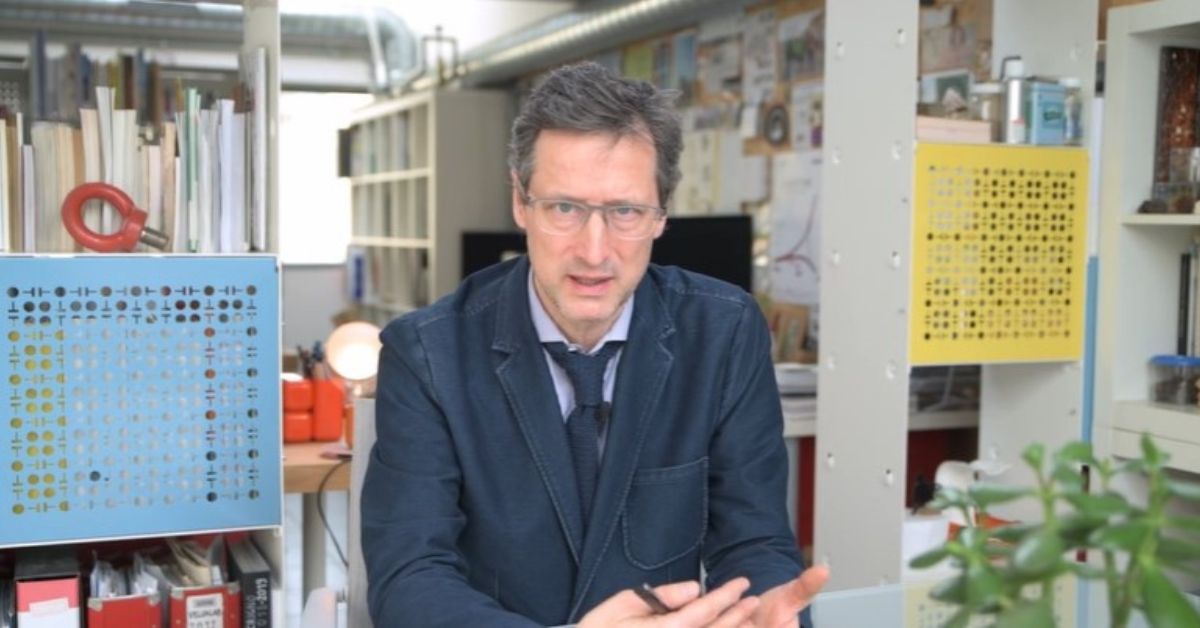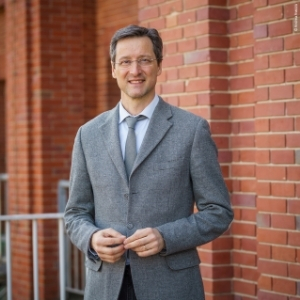Incidents that have gone down in history, such as the Grenfell Tower fire in London or the more recent Torre dei Moro fire in Milan, have highlighted how urgent and important it is to design and construct safe buildings.
Safety, far from being an abstract and generic concept, can be defined and achieved through specific and measurable criteria defined by European and global standards.
New materials and technologies actively contribute to achieving and maintaining safety standards for buildings and protection for occupants.
The active contribution of research and development of new systems and materials is at the heart of the evolution and improvement of building safety.
This is also emphasised by Prof. Marco Imperadori, Professor of Building Production at the Milan Polytechnic and coordinator of the VeluxLab project, Italy's first experimental active house on the Bovisa Campus.
Manni Group has always invested a lot of resources in the development of high-performance materials and technologies that support engineers in the construction of safe buildings.
This is also evidenced by numerous national and international certifications, synonymous with a focus on quality and complete reliability.
Below are contributions from Prof. Marco Imperadori on the importance of building safety and the key role of new technologies.
The weight of safety in an architectural project and the contribution of dry construction and new technologies for safer buildings
The safety aspect in construction, says Prof. Imperadori, is essential. Vitruvius had identified three key concepts for a building: utilitas, firmitas and venustas.
Firmitas represents the statics of the structure and, as such, is very important. Dry structures are light but elastic, so they amplify seismic stress less and can be much stronger and safer than heavy structures.
In the case of fire, however, stratigraphy can make a difference in the defence of the structure.
Finally, optimisation of the roofing ensures watertightness in the event of major weather events such as downpours or strong winds.
In general, therefore, dry technology, layering as well as the use of sandwich panels and cold-formed elements are largely a guarantee with respect to safety when well designed.
Fire safety: what every designer must bear in mind when designing the structure and enclosure
In 99% of cases, fires develop from the inside and only then spread to the outside.
For this reason, it is essential to take into account the stratigraphy of the interior enclosure and the respective materials. Sandwich panels are an excellent solution in terms of resistance and reaction to fire, especially if the insulating layer is made of PIR because it is more resistant. In special situations (e.g. firefighting separations) it is appropriate to use sandwich panels with a mineral wool core.
The type of materials and construction technologies strongly depend on the intended use of a building: designing a hospital is quite different from designing a house or a school.
In general, Prof. Imperadori emphasises, the application of proper Fire Safety Management is crucial from the very beginning. Designing construction elements with sandwich panels implies being aware of the need for such procedures and the analysis of best practices, as well as national and international regulations such as UNI EN 13501-1, which classifies construction products and elements according to their reaction to fire.
Passive fire protection systems
Alongside active protection systems such as classic sprinklers, gases and intervention teams, there are passive systems, i.e. all the design measures and materials to reduce the fire risk as far as possible.
The primary objective is the quick and safe evacuation of the occupants together with the protection of the intervention teams.
As mentioned, fires start from inside the building and can then spread to the façades. For this reason, passive protection of the interior enclosure through the use of materials and technologies that can resist fire and protect structures for a certain time is important.
For example, certain claddings such as calcium sulphate dihydrate in plasterboard panels are able to protect structures from the aggression of fire for a certain amount of time, the time it takes the fire brigade to intervene.
Similarly, Isopan panels resist fire by meeting parameters of strength (structural stability), airtightness (gas-tightness) and thermal insulation.
This proves that adequate stratigraphy is decisive for the passive protection of buildings.
Features to pay attention to when choosing dry solutions such as sandwich panels
Sandwich panels, as well as other materials, must meet two types of characteristics: reaction and resistance to fire.
The reaction relates to overall packages and indicates the degree to which a combustible material participates in the fire it is subjected to.
Resistance to fire, on the other hand, implies the ability of a structure or partitioning element to retain strength, airtightness and insulation.
Reaction to fire is regulated by European standard EN 13823, according to which materials must undergo the SBI (Single Burning Item) test, which tells us how materials contribute to fire in terms of combustibility:
- classes A1/A2 non-combustible,
- B low combustible,
- C moderately combustible,
- D self-extinguishing combustible,
- E combustible,
- F non-classified.
Smoke production is defined below:
- s1 low,
- s2 moderate,
- s3 high.
And lastly dripping:
- d0 none,
- d1 moderate,
- d2 high.
The panels are then subjected to a fire test to verify that they react appropriately according to the three parameters described (combustibility, smoke production and dripping).
In the case of Isopan sandwich panels, LEAF technology further enhances their fire retardant characteristics to the point that they achieve an astonishing Bs1d0 (best European performance for polyurethane sandwiches) in the SBI test.
LEAF technology is achieved through the use of halogen-free flame retardants, then reducing heat loss by 20% due to the microscopic structure of the honeycombs compared to solutions of the same thickness.
Specifically, the Isopan panels that achieved a Bs1d0 in the SBI test are:
- Isodeck PVsteel, panel suitable for roofing;
- Isocop, mainly used for the roofing of industrial structures,
- Isofrozen, an ideal panel for cold rooms and processing rooms.
Can a building or building materials have a degree of resistance and safety to natural disasters?
According to Prof. Imperadori, the answer is yes. Materials can certainly improve the fastening systems, tightness and safety of a building in case of natural disasters. However, it is good practice to keep in mind that it is not possible to design a building that is completely immune to Natural Hazards. It has to be designed or guaranteed through an insurance procedure - such as FM Approvals - and then do a thorough risk analysis.
Some hazard types have remained unchanged, such as earthquakes and volcanoes that are precisely geolocalised. With regard to landslides, downpours, wind, drought events and fires, these disasters have increased considerably.
By analysing the data, it is possible to estimate where and how there may have been an increase and thus act on this from an insurance analysis perspective.
Materials, for their part, contribute effectively to reducing risks, but eliminating them altogether is not possible. It would be like asking, after the Twin Towers, to design all skyscrapers to withstand a plane crash.
Certifications supporting the sustainability of a building
The safety of a building also passes through its sustainability. Next Generation Eu, New European Bauhaus and climate change are demanding us to act more and more decisively towards sustainability, energy saving and less environmental impact.
Today’s certification landscape is extremely rich. The Danish book Sustainable Building Certifications written by 3XN Architects and GXN brings together all the certifications that exist globally today.
Among the most famous are LEED, BREEAM, Itaca Protocol, Active House.
Manni Group is committed on a daily basis to studying and implementing sustainable and environmentally friendly solutions that improve energy efficiency.
It has obtained important international certifications including its own LEED and BREEAM and the FM Approved marking.
LEED is a voluntary certification system that promotes a sustainable approach geared towards:
- energy and water saving,
- reduced CO2 emissions,
- improving the ecological quality of interiors,
- attention to the materials and resources used,
- design and site selection.
BREEAM is an internationally used assessment grid that proposes an approach based on the estimation of several factors in order to assess the environmental load of the building.
The FM Approved marking is a globally recognised voluntary certification obtained by Manni Group for Isopan insulation panels.
The approval procedure tries to limit the number of tests to be carried out by testing the most critical solutions, for example:
- Reaction to fire: the solutions with the greatest thickness of insulation (whether PIR or rock wool) are tested;
- Mechanical wind tests: the tests concern the solutions with the smallest thickness on PIR or rock wool, the largest spans and the smallest fixings.
In general, sustainability and safety are two sides of the same coin and are the responsibility of every designer. Materials and building systems, such as those proposed by the Manni Group and certified worldwide, are a concrete response to the challenges of contemporary architecture.


